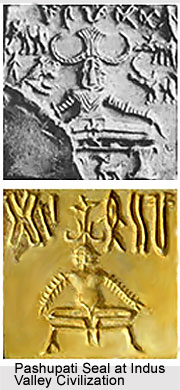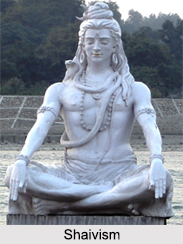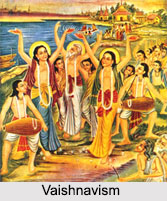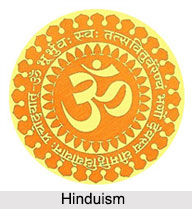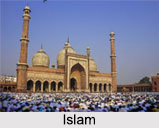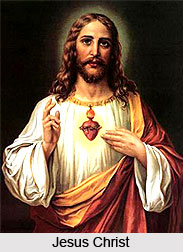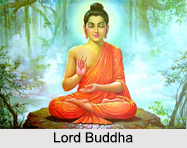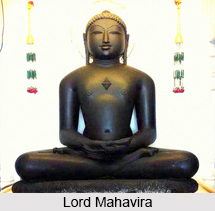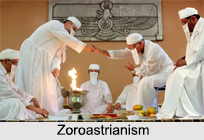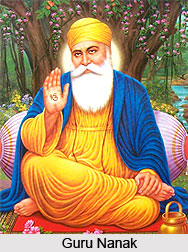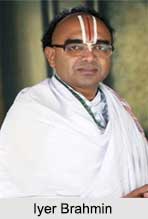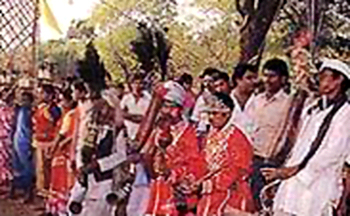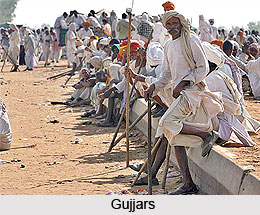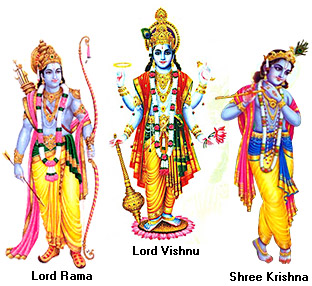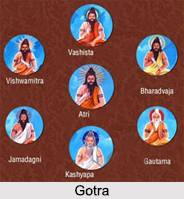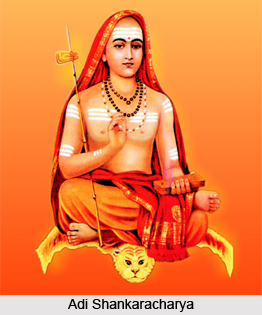 Post-Vedic Age was transformed and enlightened by the teachings and works of a great spiritual guru namely Adi Shankaracharya, also known as Bhagavatpada Acharya (the guru at the feet of Lord). An unprecedented philosopher and savant of Bharat- Adi Shankaracharya (Shanker- sage and Acharya-seer) or the first Shankar shaped Hindu thoughts and ideologies. At a time when chaos, superstition and bigotry were enveloping and plaguing Hindu beliefs and practices, Adi Shankaracharya embarked on a journey to revive the Upanishads (primal musings of sages in the forest on the nature of reality), the Bhagawat Gita (India"s most sacred religious text), the Yoga Sutra (treatises on meditation) and the Vedantic thought (post-Vedic philosophy) in his philosophy of Advait (non dualism). Respected and influential monks and scholars of the time did not have the strength to stop him from establishing the Shanmatha (six-important faiths or Hindu religious sects) which are Saivam (Lord Shiva), Vaishnavam (Lord Vishnu), Saktham (Goddesses), Souram (Lord Surya or Sun God), Ganapathyam (Lord Ganapathy) and Skandam (Lord Subramanya). A chaotic intellectual atmosphere with conflicting religious ideologies and ritualistic excesses was thus calmed single handedly by Adi Shankaracharya, leading to growth of Hinduism. He strongly held that Brahman the Supreme and man are of one essence and that all people should strive to cultivate this vision of oneness.
Post-Vedic Age was transformed and enlightened by the teachings and works of a great spiritual guru namely Adi Shankaracharya, also known as Bhagavatpada Acharya (the guru at the feet of Lord). An unprecedented philosopher and savant of Bharat- Adi Shankaracharya (Shanker- sage and Acharya-seer) or the first Shankar shaped Hindu thoughts and ideologies. At a time when chaos, superstition and bigotry were enveloping and plaguing Hindu beliefs and practices, Adi Shankaracharya embarked on a journey to revive the Upanishads (primal musings of sages in the forest on the nature of reality), the Bhagawat Gita (India"s most sacred religious text), the Yoga Sutra (treatises on meditation) and the Vedantic thought (post-Vedic philosophy) in his philosophy of Advait (non dualism). Respected and influential monks and scholars of the time did not have the strength to stop him from establishing the Shanmatha (six-important faiths or Hindu religious sects) which are Saivam (Lord Shiva), Vaishnavam (Lord Vishnu), Saktham (Goddesses), Souram (Lord Surya or Sun God), Ganapathyam (Lord Ganapathy) and Skandam (Lord Subramanya). A chaotic intellectual atmosphere with conflicting religious ideologies and ritualistic excesses was thus calmed single handedly by Adi Shankaracharya, leading to growth of Hinduism. He strongly held that Brahman the Supreme and man are of one essence and that all people should strive to cultivate this vision of oneness.
Birth and Adopting Sannyasa
Adi Shankaracharya was born in around 788 AD to a nambuthiri brahmin couple, Shivaguru and Aryamba, in a little village called Kaladi in Kerala. As early as the age of eight he mastered the four Vedas and could recite the epics and Puranas by heart. When once a poor lady gave him the last piece of Amla fruit she had at home, Shankara being overwhelmed, composed a hymn (Kanakadharastavam) to Sri, the goddess of wealth. Subsequently, the lady was showered with golden amlas for her piety. Shankara is said to have re-routed the course of the Purna river, so that his old mother would not have to walk a long distance to the river for her daily ablutions. Once a crocodile had attacked him and caught hold of his leg, while bathing in the river. Shankaracharya then adopted Sannyasa (the ascetic life) with his mother"s permission, sensing his mother"s inability to save him. No sooner did he recite the mantras of renunciation than the crocodile released him. This kind of renunciation is called Apatsamnyasa. Consequently, the quest for a guru led him to Govinda Bhagavatpada, the disciple of the Advaitin Gaudapada on the banks of the river Narmada. He ushered Shankaracharya towards the mastery of Hatha, Raja and Jnana Yoga. Thereafter he was initiated into the Paramahamsa order of Samnyasa, the highest kind of renunciation. Thus he was reborn as Adi Shankaracharya, who was impassioned to spread the Vedic teachings of the Brahma Sutras throughout the world.
Early life of Adi Shankaracharya
Adi Shankara is also known as Shankara Bhagavatpadacharya. Scholars date him between 788 and 820 CE. There are a number of traditional biographies, the Shankaravijayas, written by his followers. He was born in Kaladi, a small village in Kerala. His father died when he was young and he was brought up by his mother. Adi Shankara was named Shankara in the honor of Lord Shiva. The initiation of Shankara into student life was performed at the age of five. He mastered all the four Vedas at the age of eight. From a very young age Shankara was attracted to the monastic life.
Later life of Adi Shankaracharya
After his mother gave him permission to enter into the renunciatory stage, Adi Shankara left Kerala and traveled to the northern part of India in search of a holy tutor. As a young Nambudri Brahman boy of about eight, Shankara is said to have vowed to become a renouncer but his mother would not let him. This great prophet toured the whole of India with the sole purpose of propagating his teachings through religious discourses and debates with other eminent philosophers and scholars. He is also the pioneer of four monasteries, which made a significant contribution to the historical development, revival, and spread of post-Buddhist Hinduism and essentials of Advaita Vedanta. He was also the founder of Dashanami monastic order and the Shanmata tradition of worship.
He went on a pilgrimage to the source of the River Ganga and stayed at Badrinath for four years, where he composed his major works. He returned to Varanasi and continued to teach. Apart from this text, three others are positively accepted as being of his authorship: the commentaries on the Brhadaranyaka and Taittiriya Upanishads and the independent work, the `Thousand Teachings` (Upadesasabari). He probably also wrote the commentary on Gaudapada`s Karika to the Mandukya Upanishad and the commentary on the Bhagavad Gita, though there is not universal agreement on this.
Teachings of of Adi Shankaracharya
In his commentaries Shankara developed a theology in which he tried to establish that spiritual ignorance (avidya) or illusion (maya) is caused by the superimposition (adhyasa) of what is not the self onto the self. All knowledge is distorted by superimposition or projection, which prevents us from seeing our true nature as the self`s (atman`s) pure subjectivity, ontologically identical with the absolute (brahman). In order to realize the truth of the identity of the self with the absolute, a person must develop discrimination.
Adi Shankara was the founder of four mathas to guide the Hindu religion and to bring about a major reformation in the Indian spiritual life. Each of the chiefs of these four mathas acquires the title of Sankaracharya after the first Shankara. Hinduism had begun to decline at the time of Adi Shankara`s life because of the deep impacts of the two religions, Buddhism and Jainism. He along with the help of Madhva and Ramanuja became active participants in the revival of Hinduism. To deal with logically establishing the doctrine of Advaita Vedanta was the main objective of his works. In the process of teaching he gave a very high priority on the personal experience of the student. According to Shankara, the knowledge sections are of greater importance, for liberation is the Veda`s central message, and only knowledge leads to liberation. No action can discriminate the self from what is not the self, only knowledge can achieve this, as silver is suddenly seen to be shell.
Shankara does make concessions to the idea of devotion to a personal Lord as a lower level of knowledge. Brahman, in its timeless essence as identical with the self, is beyond all predicates and qualities, but in its temporal mode as the Lord it has attributes, and so can be approached through devotion as an object of consciousness. To see the absolute as the Lord is to maintain a distinction between self and absolute, which is to retain a vestige of ignorance which must finally be transcended. If reality is one, all distinctions must be illusory.
Works of Adi Shankaracharya
Govinda saw the potential in Adi Shankaracharya to expound the philosophy of Vedanta through commentaries on the principal Upanishads, the Brahmasutras and the Gita. To compose his commentaries, Shankra travelled to various holy places in India. These commentaries are called Bhashyas and have triggered sub-commentaries known as Varttikas, Tikas and Tippanis. He also commented upon the Adhyatma-patala of the Apastamba sutras and on Vyasa`s Bhashya to Patanjali`s Yogasutras. In addition to these commentarial texts, Shankara wrote independent treatises called Prakarana Granthas, including the Upadesasahasri and Atmabodha.
Sankara debated with the religious heads of other schools for two reasons. He wanted to influence disciples from other schools. It was also not uncommon that if a participant would overpower his opponent, then he would become the disciple of the winner. Thus Shankara successfully debated with Buddhist philosophers, followers of Samkhya and Purva Mimamsakas and followers of Vedic ritualism and consolidated his prominence as a spiritual guru. He ascended the Sarvajnapitha with the blessings of Goddess Sarada, after debating and defeating all other philosophers of the time in Kashmir. Shankara composed five Shlokas (Manisha Panchakam), when he realized that the untouchable he came across was Lord Shiva. Sankara even revived neglected pujas in temples, established Sri"s Yantras at Devi temples as in Kanchipuram and composed many devotional hymns. He then went to Kedarnath and attained samadhi at the age of 32 years.
Philosophy of Adi Shankaracharya
Shankaracharya"s philosophical teachings are summarized in Dasa Shlokas, or Ten Verses, which elaborated the omniscience, omnipotence and omnipresence of Brahman - the core concept of Hinduism (Sanatana Dharma).
For the individual the five elements are not expressive of his real nature. The individual is irrevocable. Castes and creeds do not define an individual and he will be seen when "maya" is removed. The teachings of various religions and philosophies will not reveal his true nature. One is colourless, formless and light. He pervades the whole universe and is above, in the middle and below, in all directions. He has no teacher, scripture or any disciples and does not need parents, Vedas, sacrifices and pilgrimages. He is thus the eternal witness and absolute knowledge.
The individual is neither awake in deep sleep nor dreaming, but above consciousness with which the three are associated. All these are due to ignorance and he is beyond that. He pervades everything, everywhere and the eternal reality and self-existent. The whole universe depends on him and become nothing without him. He is neither isolated nor non-isolated, neither he is empty nor full. He cannot be called one, for that implies two, which is not.
Monastic Centres of Adi Shankaracharya
Adi Shankaracharya established four Mutts or Peethas at four corners of India. Vedanta Jnana Peetha was established in Sringeri (South India) in Karnataka. Next was Kalika Peetha set up in Dwaraka (West India) in Gujarat. Govardhana Peetha was set up in Jagannath Puri (East India) in Odisha. Jyotih Peetha was constructed in Badarikashrama (North India) in Uttarakhand. These centres are sacred and would intimate one with his philosophy and teachings.
Famous Book of Adi Shankaracharya
The "Crest-Jewel of Discrimination" or Viveka Chudamani, one of his most famous works, upholds his ideas of non-dual Vedanta. Adi Shankaracharya was also a remarkable poet. His poems are sung and recited to this day by his disciples and seekers as an aid to meditation.
Related articles:
Bhagawat Gita
Peethas
Puranas
Jagannath Temple
Vedic Literature
Patanjali Yoga Sutra
Hindu Philosophy
Upanishads
